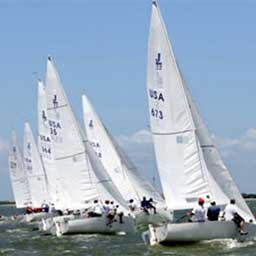Celestial Navigation graduates will have mastered the techniques of open ocean position fixing using sextant and timepiece. They will be able to apply their knowledge of sight reduction methodology to enable them to reduce a sextant sight to a plotted line of position using any celestial body found in the Nautical Almanac.
Recommended Equipment: It is recommended that Celestial Navigation courses be conducted with an equipment inventory and publications adequate to enable the graduate to successfully pass the written examination and complete all the certification’s requirements.
Prerequisite: The prerequisite for Celestial Navigation Certification is a US Sailing Coastal Navigation Certification.
Certification Requirements: Celestial Navigation Certification requires the successful completion of the following knowledge and skills as demonstrated by passing a written examination, without the use of a programmed calculator. These requirements are expected to be performed with confidence and a high degree of accuracy.
Practical Skills
Introduction to Methodology:
- Understand the procedures for obtaining altitudes on the sun, moon, stars and planets using a sextant.
- Demonstrate a calculation for time of meridian passage, and calculate latitude from the observed meridian altitude of the sun.
- Plot a running fix from two celestial sightings separated by at least one hour, which is accurate within five miles.
- Obtain latitude by a Polaris sight.
- Calculate time of sunrise, sunset, and civil and nautical twilight.
- Determine azimuths and altitudes of appropriate stars and/or planets at twilight, preparatory to taking sights.
- Demonstrate sufficient proficiency with the sextant to obtain accurate celestial body altitudes.
- Know the proper application of all the corrections necessary to adjust a sextant altitude to an observed altitude.
Navigation Equipment:
- Understand the proper handling, operation and maintenance of a sextant.
Chartwork:
- Construct a Universal Plotting Sheet.
- Calculate sight reductions by use of Sight Reduction Tables, and plot at least three of these lines of position on a Universal Plotting Sheet. This fix must be accurate to within five nautical miles.
- Transfer a fix on a Universal Plotting Sheet to a nautical chart.
Knowledge
Introduction to Methodology:
- Be familiar with Celestial Navigation terminology and theory.
- Understand how to prepare a Universal Plotting Sheet.
- Be familiar with techniques for computing sight reductions on celestial bodies.
- Understand how to determine latitude and longitude by sightings and sight reductions of celestial bodies.
- Understand the method of determining the deviation of the ship’s compass by use of a celestial body.
Publications:
- Be familiar with the contents and techniques for use of the Nautical Almanac and HO 249 Sight Reduction Tables.









